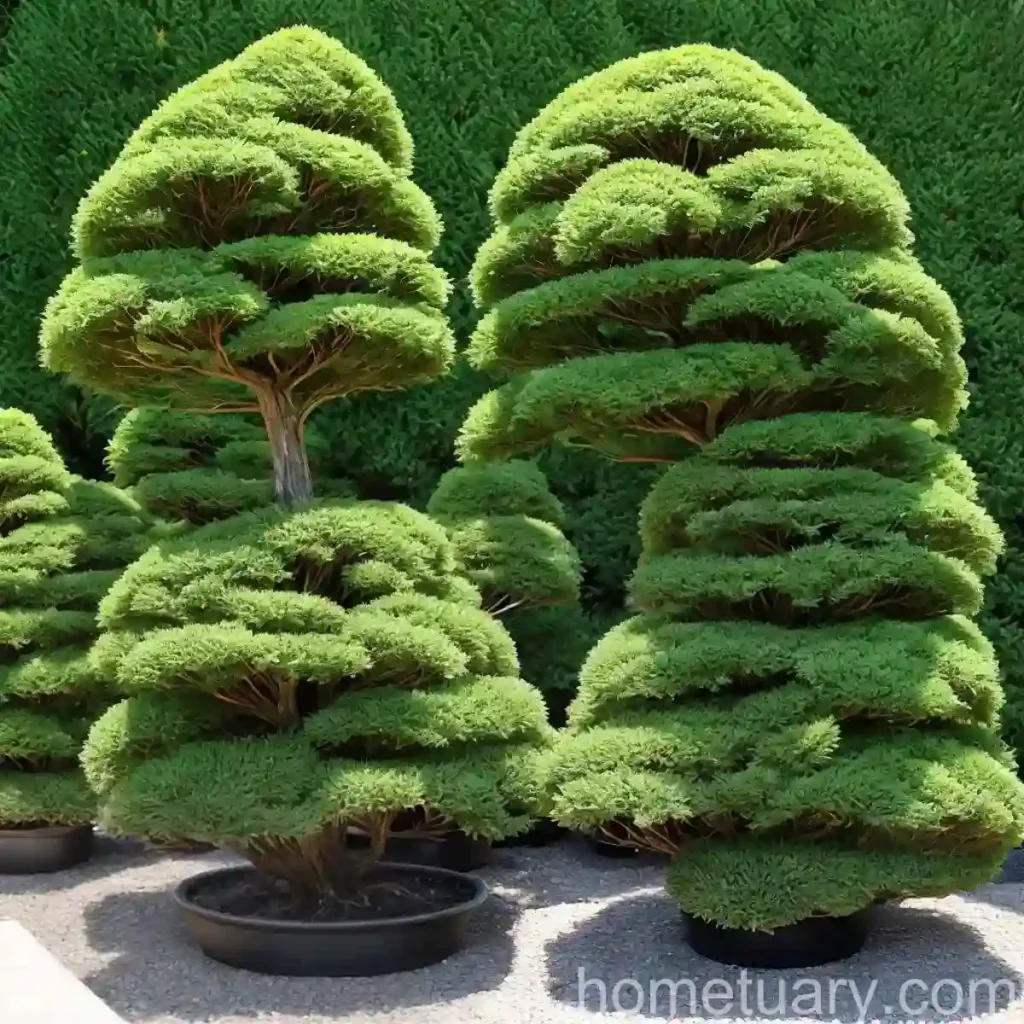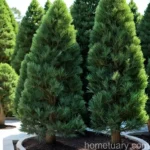Japanese Cedar (Cryptomeria japonica ‘Elegans Nana’): A Comprehensive Guide
Introduction
As a plant scientist with expertise in horticulture, I am excited to delve into the world of Japanese cedar, specifically the cultivar Cryptomeria japonica ‘Elegans Nana.’ This distinct and elegant plant has garnered attention for its beauty and versatility in landscaping and gardening. In this comprehensive guide, we will explore the cultivation, maintenance, and various aspects of the Japanese cedar ‘Elegans Nana,’ providing valuable insights for enthusiasts and horticulturalists.
What is Japanese Cedar (Cryptomeria japonica ‘Elegans Nana’)?
Cryptomeria japonica, commonly known as Japanese cedar, is a captivating evergreen conifer that hails from Japan and China. The ‘Elegans Nana’ cultivar is a dwarf variety that exhibits compact growth and striking foliage, making it an excellent choice for ornamental landscaping and container cultivation.
Key Takeaways
Before delving into the detailed aspects of Japanese cedar ‘Elegans Nana’, let’s outline some key takeaways that will be covered in this guide:
- Japanese Cedar (Cryptomeria japonica ‘Elegans Nana’):
- Culture: Understanding the preferred environmental conditions for optimal growth.
- Uses: Exploring the versatile applications of this captivating plant.
- Water: Proper watering techniques and requirements.
- Sunlight: Evaluating the sunlight needs and exposure preferences.
- Fertilizer: Choosing suitable fertilization methods for healthy growth.
- Soil: Identifying the ideal soil conditions for cultivation.
- Pruning: Guidelines for pruning and shaping Japanese cedar ‘Elegans Nana’.
- Propagation: Exploring propagation methods for expanding plant populations.
- Container Cultivation: Insights into growing ‘Elegans Nana’ in containers.
- Popularity: Understanding the widespread appeal of this cultivar.
- Common Diseases: Recognition and management of potential diseases.
- Common Pests: Identifying and addressing prevalent pest issues.
- Botanist’s Tips: Professional recommendations and insights for enthusiasts.
- Fun Facts: Fascinating and lesser-known information about ‘Elegans Nana.’
- Links to External Resources: Additional references and resources for further exploration.
With these key takeaways in mind, let’s embark on an in-depth journey into the world of Japanese cedar ‘Elegans Nana,’ uncovering its charm and intricacies.
Culture
Understanding the cultural requirements of Japanese cedar ‘Elegans Nana’ is crucial for creating an environment where it can thrive and exhibit its distinctive beauty. Whether you are a home gardener or a landscaping professional, providing the right conditions is essential for the overall health and vitality of this captivating cultivar.
Uses
There are numerous uses for Japanese cedar ‘Elegans Nana’ due to its versatile characteristics and aesthetic appeal. Some of the common applications include:
- Ornamental Landscaping: Utilized for creating visually appealing landscapes in residential and commercial settings.
- Container Cultivation: Ideal for growing in containers on patios, balconies, or small gardens.
- Privacy Screening: Used to form natural barriers and screens due to its dense foliage.
- Accent Planting: Adds elegance and texture to garden beds, borders, and rock gardens.
- Bonsai: Suitable for bonsai cultivation, showcasing its adaptable nature and ornamental features.
The multifaceted uses of ‘Elegans Nana’ make it a desirable choice for various landscaping and gardening projects, offering both visual allure and practical functionality.
Water
Proper watering is essential for the health and vigor of Japanese cedar ‘Elegans Nana.’ While it displays some drought tolerance once established, consistent and adequate moisture is crucial, especially during the establishment phase and in dry conditions. Here are some key points to consider regarding watering:
- Establishment Phase: Provide regular and deep watering to facilitate strong root development.
- Moisture Monitoring: Keep an eye on soil moisture levels, especially during periods of low rainfall.
- Avoid Waterlogging: Ensure well-draining soil to prevent waterlogging, which can lead to root rot.
Understanding the watering needs of ‘Elegans Nana’ contributes to its overall vitality and prevents potential stress from insufficient or excessive moisture.
Sunlight
Japanese cedar ‘Elegans Nana’ thrives in locations with ample sunlight, although it also exhibits some tolerance for partial shade. When considering its sunlight requirements, keep the following in mind:
- Full Sun: Ideally, provide at least 6-8 hours of direct sunlight for optimal growth and foliage density.
- Partial Shade: While it can adapt to partial shade, ensure it still receives a significant amount of sunlight.
Balancing sunlight exposure is key to promoting lush and healthy foliage in Japanese cedar ‘Elegans Nana.’
Fertilizer
To support robust growth and vibrant foliage, appropriate fertilization practices are crucial for Japanese cedar ‘Elegans Nana.’ Consider the following guidelines when fertilizing this cultivar:
- Balanced Fertilizer: Use a balanced, slow-release fertilizer to provide essential nutrients over an extended period.
- Application Timing: Apply fertilizer in early spring before the onset of new growth for best results.
- Avoid Excessive Fertilization: Over-fertilization can lead to excessive foliage growth at the expense of overall plant health.
Proper fertilization contributes to the overall vitality and visual appeal of ‘Elegans Nana,’ ensuring it receives the necessary nutrients for robust growth.
Soil
Understanding the soil preferences and requirements of Japanese cedar ‘Elegans Nana’ is pivotal for creating an environment conducive to its optimal development. When considering soil conditions, keep the following in mind:
- Well-Draining Soil: Ensure the soil has good drainage to prevent waterlogging and root rot.
- Acidic Soil: ‘Elegans Nana’ thrives in slightly acidic soil with a pH range of 5.5 to 6.5.
- Organic Matter: Incorporating organic matter such as compost can enhance soil texture and fertility.
By meeting its soil requirements, ‘Elegans Nana’ can establish strong roots and sustain healthy growth.
Pruning
Pruning Japanese cedar ‘Elegans Nana’ plays a crucial role in shaping its appearance, promoting density, and maintaining overall plant health. Here are some essential pruning tips and techniques for this captivating cultivar:
- Seasonal Pruning: Conduct light pruning in late winter to early spring to remove any dead, damaged, or overgrown branches.
- Shaping: Use pruning to maintain a compact and symmetrical form, enhancing its aesthetic appeal in landscaping applications.
- Pruning Best Practices: Employ proper pruning tools and techniques to avoid causing stress or damage to the plant.
Applying appropriate pruning practices ensures that ‘Elegans Nana’ maintains its elegant form and remains visually appealing throughout the seasons.
Propagation
Expanding the population of Japanese cedar ‘Elegans Nana’ through propagation allows for the creation of new plants and the preservation of desirable traits. Here are some common propagation methods for this cultivar:
- Cuttings: Utilize semi-hardwood cuttings in late summer to early autumn for successful propagation.
- Rooting Hormone: Application of rooting hormone can enhance the success rate of cuttings.
- Propagation Environment: Provide consistent moisture and indirect light for the development of cuttings.
By exploring propagation methods, enthusiasts can contribute to the proliferation of ‘Elegans Nana’ and maintain its presence in horticultural settings.
Container Cultivation
Growing Japanese cedar ‘Elegans Nana’ in containers presents an attractive option for individuals with limited garden space or those seeking to incorporate this captivating cultivar into patios, balconies, or small outdoor areas. Consider the following aspects when cultivating ‘Elegans Nana’ in containers:
- Container Selection: Choose well-draining containers with adequate depth to accommodate root development.
- Soil Medium: Utilize a high-quality potting mix that provides good drainage and aeration.
- Watering Management: Monitor soil moisture levels and provide consistent watering, especially during the growing season.
Container cultivation allows for the incorporation of Japanese cedar ‘Elegans Nana’ into diverse outdoor settings, showcasing its beauty and versatility even in constrained spaces.
Popularity
The widespread appeal of Japanese cedar ‘Elegans Nana’ stems from its captivating characteristics and adaptable nature, making it a sought-after choice for diverse horticultural applications. Its popularity is attributed to several key factors, including:
- Compact Growth: The dwarf nature of ‘Elegans Nana’ makes it well-suited for smaller gardens, container cultivation, and urban landscapes.
- Visual Appeal: Its striking foliage and elegant form contribute to its allure, attracting attention and admiration.
- Versatility: ‘Elegans Nana’ is adaptable to various landscaping and gardening scenarios, offering flexibility in design and application.
As its popularity endures, ‘Elegans Nana’ continues to captivate plant enthusiasts and landscaping professionals alike, solidifying its position as a favored cultivar.
Common Diseases
Understanding potential diseases that may affect Japanese cedar ‘Elegans Nana’ is essential for proactive management and preventive measures. While this cultivar is generally resilient, it is important to be aware of common diseases such as:
- Leaf Spot: Keep an eye out for signs of leaf spot, which can be managed through sanitation and, if necessary, targeted fungicidal treatments.
- Root Rot: Ensure proper drainage and avoid overwatering to mitigate the risk of root rot, a potentially detrimental condition.
By being vigilant and addressing potential diseases promptly, ‘Elegans Nana’ can maintain its health and vigor.
Common Pests
Pest infestations can pose challenges to the well-being of Japanese cedar ‘Elegans Nana’, requiring vigilant monitoring and appropriate intervention. Some common pests to be aware of include:
- Spider Mites: Look for signs of webbing and stippling on foliage caused by spider mite activity, and utilize horticultural oils or soaps for control.
- Scale Insects: Monitor for scale infestations, which can be managed through targeted insecticidal treatments.
Staying attuned to the presence of pests and implementing suitable pest control measures is crucial for safeguarding the vitality of ‘Elegans Nana.’
Botanist’s Tips
Drawing from professional insights, here are some valuable tips for enthusiasts and horticulturalists seeking to cultivate and appreciate Japanese cedar ‘Elegans Nana’:
- Adequate Spacing: When planting multiple ‘Elegans Nana’ specimens, ensure sufficient spacing to allow for optimal growth and prevent overcrowding.
- Mulching: Apply a layer of organic mulch around the base of the plant to conserve moisture, maintain soil temperature, and suppress weed growth.
- Regular Monitoring: Consistently observe the plant for any signs of stress, diseases, or pest activity, intervening promptly if needed.
Incorporating these tips into the care and maintenance of ‘Elegans Nana’ can contribute to its long-term health and visual appeal.
Fun Facts
To add a touch of intrigue and fascination, here are some fun and lesser-known facts about Japanese cedar ‘Elegans Nana’:
- Symbolism: In Japanese culture, Cryptomeria japonica holds symbolic significance and is often associated with longevity and resilience.
- Winter Appeal: ‘Elegans Nana’ exhibits remarkable winter hardiness, maintaining its visual allure even during the colder months.
- Coastal Adaptability: This cultivar showcases adaptability to coastal environments, offering a resilient option for seaside gardens.
Discovering these intriguing aspects of ‘Elegans Nana’ adds depth to the appreciation of its botanical charm and cultural relevance.
Links to External Resources
For further exploration and reference, here are some valuable external resources that provide additional insights into Japanese cedar ‘Elegans Nana’ and related horticultural topics:
- Royal Horticultural Society (RHS)
- American Conifer Society
- University Cooperative Extension Services
- The American Phytopathological Society
These resources offer access to authoritative information, research, and community engagement, serving as valuable tools for enthusiasts, professionals, and researchers alike.
Conclusion
Throughout this comprehensive guide, we have delved into the captivating world of Japanese cedar ‘Elegans Nana,’ exploring its cultural requirements, uses, maintenance practices, and various aspects that contribute to its appeal. From understanding its preferred environmental conditions to unraveling its symbolic significance, ‘Elegans Nana’ embodies a blend of elegance, resilience, and practicality, making it a cherished addition to horticultural landscapes and gardens. As plant enthusiasts and horticulturalists continue to appreciate and cultivate this remarkable cultivar, the enduring allure of Japanese cedar ‘Elegans Nana’ remains a testament to its timeless charm and botanical significance in the world of plants and gardens.
As a passionate plant scientist, it has been a pleasure to compile this comprehensive guide, shedding light on the enchanting and versatile nature of Japanese cedar ‘Elegans Nana.’ I hope that this resource serves as a source of inspiration and knowledge for plant enthusiasts, horticultural professionals, and individuals seeking to deepen their understanding of this remarkable cultivar. Through the exploration of cultural practices, uses, and intriguing facts, we have embarked on a journey into the captivating realm of ‘Elegans Nana,’ celebrating its beauty and contribution to horticultural diversity.















